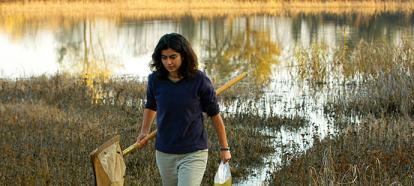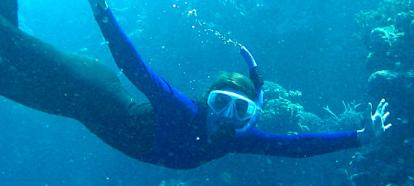Slideshow Image Gallery
 IB rolled out new curriculum in 2009 to meet the demands of the growing popularity of the IB Major. Two separate tracks exist:
|
 The IB Curriculum features 2 tracks for IB Undergraduate study. Establish and maintain contact with Undergraduate Advisors to receive support to achieve immediate and long-range goals. Learn More: |
 The Valley Life Sciences Building (VLSB) was initially constructed in 1930 and was renovated approximately 60 years later as one of four building projects (Life Sciences Building, Life Sciences Addition, Genetics & Plant Biology Building, North West Animal Facility) undertaken to revitalize the biological sciences on the UC Berkeley Campus. Learn More: |
 Sky lupines (Lupinus nanus) are a common spring resident of California annual grasslands. Lupines add nitrogen to the soil through their mutually beneficial symbiosis with root-nodulating rhizobium bacteria. Learn More: |
 Female Greater Blue-Ringed octopus, Hapalochlaena lunulata is carrying her eggs. Blue-rings are known for their toxin (tetrodotoxin) and can be turned on or off as a warning. This tiny octopus (the size of a grape) contains enough TTX to kill several adult humans. Learn More: |
 Emily Lindsey working in her field site in SW Ecuador. Emily is studying the extinction of the Pleistocene megafauna. The bones pictured are a femur, tibia-fibula and other bone fragments of giant sloths ~10,000-40,000 years old. Learn More: |
 This salamander (Ensatina eschscholtzii xanthoptica), with orange skin and bright yellow eyes, is a mimic of the Western Newt (Taricha sp.), a poisonous species that lives in the same habitat with Ensatina around the Bay Area. Learn More: |
 IB Grad student Brian Swartz (Padian Lab) examining vertically uplifted fossil tetrapod footprints in Utah. Next photo: Brian studying Acanthostega gunnari, the first known digit-bearing vertebrate (~360 million years old), at the University of Cambridge Museum of Zoology. |
 IB Grad Student Maya deVries snorkeling at Lizard Island on the Great Barrier Reef, Australia in search of mantis shrimp. Over 30 species of mantis shrimp call Lizard Island home, which makes this place great for studying mantis shrimp feeding behavior. Learn More: |
 Tropical forests are renowned for their biodiversity, but little is known about the microbes. A vast array of fungi & bacteria live inside every leaf, without harming the host plant. These "endophytes" likely play an important ecological role, and their metabolites offer an untapped pharmacological resource. Learn More: |